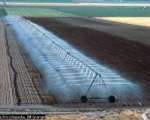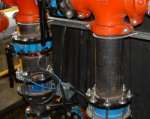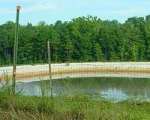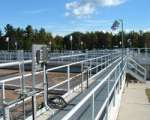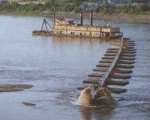
|
a |
|
- |
|
- |
|
- |
| careers |
 Hdpe
Piping Applications
Hdpe
Piping Applications
Oxford Plastics makes heavy duty poly pressure pipe for a variety of residential, public and industrial applications. While the list of hdpe piping applications continues to expand, its strength, flexibility, excellent flow rates and high chemical resistance are qualities uniquely suited for the transfer of liquids, steam, solids and air from one point to another. Our hdpe or poly pipe has many other applications from the transfer of extremely hazardous materials such as chemical and waste, to the protection of sensitive equipment from high pressures, corrosion and other extreme weather conditions. Even as we continue to discover new hdpe piping applications, our research team remains committed to delivering reliable and cost effective piping solutions for new and challenging projects.
Applications:
|
municipal | industrial | marine & dredging | agriculture | sanitation | mining | electrical | irrigation | communications | residential | landfill | recreation | road & highway construction | geothermal heating | ventilation | hydronic | fireworks | fish farms | floating docks | culvert | pontoons | tile | material handling |
||
Molded from clay, or made
from copper, steel or even iron, pipe was originally restricted to the
transportation of water and waste water in sewage and irrigation
systems. As a rigid hollow tube or cylinder, in conjunction with fittings
and valves, pipe is used to create systems to transport liquids, liquid-solid
mixtures, fragmented solids and air from one point to another. Piping
applications have steadily advanced as new piping materials were introduced.
As a piping material, plastic is the new kid on the block. Because of
plastic, water, steam, ventilation and gas pipes are becoming standard
fare in most buildings, huge systems of pipes were built for municipal
water supply and sewage disposal, and pipelines as long as 800 miles (Trans-Alaska
Pipeline) were developed to transport new materials such as chemicals,
petroleum and other hazardous materials. Plastic not only allowed piping
to perform other functions such as protecting sensitive electrical
and communications systems against corrosion and harsh weather conditions,
it made it possible to rehabilitate or replace obsolete piping systems
and to install pipe in the most inaccessible places there are.
The properties that make plastic so popular as a piping material are its greater flexibility, structural strength and toughness, dimensional stability and resistance to household and industrial chemicals. As one of the rising stars in the piping industry compared to other plastic materials such as PVC, polyethylene is often chosen for its unique combination of strength with flexibility. Its flexibility allows for the coiling of smaller diameter pipes, reducing fitting requirements and hence installation costs, while its structural strength made it a viable and welcome alternative to concrete, copper and steel. Its excellent toughness and flexibility guarantee that pe pipe applications will continue to grow not only in terms of functionality, but in terms the materials it can handle.
With Oxford Plastics, you get piping solutions that match the needs of each unique situation based on results of analysis and years of experience. Our solutions are manufactured with your expectations in mind - not ours. Below is a brief sample of other poly pipe applications:
|
Acid Transfer Pipelines |
|
|
|
|
|
Blasting Tubes |
Marinas |
|
|
|
|
|
|
|
|
|
|
Cable-Stayed Bridges |
Organic Materials Transfer |
|
|
|
|
De-Watering
Pipe |
|
|
|
|
|
|
Playground Equipment |
|
|
|
|
Fertilizer Manufacturing |
Recreational Pipes |
|
|
|
|
|
Sewage Treatment Applications |
|
|
|
|
Gas Mains |
|
|
|
|
|
|
Tailings Disposal Piping |
|
|
|
|
Hazardous Waste Transfer |
|
|
|
|
|
|
Ventilation Piping |
|
|
|
|
|
|
|
|
|
|
|
Water Distribution Systems |
|
|
|
|
Lake Crossing |
|
|
Copyright ® 2003 - 2008 | Oxford Plastics Inc. | All Rights Reserved |
|||
|
Oxford Plastics Inc. ~ PO Box 119, Oxford Road 6, Embro, Ontario, CANADA, N0J 1J0 |
|||
|
Office: 519.423.6232 ~ Fax: 519.423.6057 ~ Toll Free: 1.800.263.0502 |
